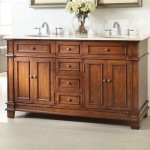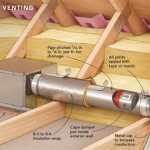How Much Does It Cost To Upgrade A Bathroom?
Upgrading a bathroom is a common home improvement project. It can significantly enhance the comfort, functionality, and aesthetic appeal of a home, ultimately increasing its overall value. However, understanding the financial implications of such a project is crucial for effective budgeting and planning. The cost of a bathroom upgrade can vary widely, influenced by factors such as the scope of the renovation, the materials selected, and the labor required.
This article will provide a comprehensive overview of the various costs associated with bathroom upgrades. It will delve into the factors that influence pricing, offer cost estimations for different types of renovations, and discuss potential options for managing and minimizing expenses. By understanding the financial landscape of bathroom upgrades, homeowners can make informed decisions and achieve their renovation goals within a reasonable budget.
Factors Influencing the Cost of a Bathroom Upgrade
Several key factors contribute to the overall cost of a bathroom upgrade. These factors can be broadly categorized into the scope of the project, the materials chosen, and the labor required. Each category encompasses a range of considerations that can significantly impact the final price tag.
The scope of the project is perhaps the most influential factor. A minor cosmetic upgrade, such as replacing a faucet and repainting the walls, will naturally be less expensive than a full-scale renovation that involves reconfiguring the layout, relocating plumbing, and installing new fixtures. Consider whether the upgrade involves simply replacing existing elements or fundamentally altering the bathroom's structure and functionality.
Material selection plays a significant role in determining the overall cost. High-end materials, such as marble countertops, custom cabinetry, and designer fixtures, will substantially increase expenses compared to more budget-friendly options like ceramic tile, stock vanities, and standard fixtures. The quality and durability of the materials should also be considered, balancing aesthetic preferences with long-term value and maintenance requirements.
Labor costs represent a substantial portion of the total expense. Hiring licensed and experienced professionals, such as plumbers, electricians, and contractors, is essential for ensuring the project is completed safely and to code. Labor costs will vary depending on the complexity of the work, the contractor's rates, and the geographic location. Obtaining multiple quotes from different contractors is crucial for comparing prices and ensuring fair compensation.
In addition to these primary factors, ancillary costs can also contribute to the overall expense. These may include permit fees, demolition and disposal costs, unexpected repairs (such as discovering hidden water damage), and expenses associated with temporary bathroom facilities if the existing bathroom is unusable during the renovation.
Cost Estimations for Different Types of Bathroom Upgrades
The cost of a bathroom upgrade can be categorized into several project types, each with its own price range. These categories generally include minor cosmetic upgrades, mid-range renovations, and high-end transformations. Understanding the scope of each type and the associated costs can help homeowners establish a realistic budget.
A minor cosmetic upgrade typically involves surface-level improvements that enhance the bathroom's appearance without altering its fundamental structure or functionality. This category might include repainting walls, replacing the faucet and showerhead, installing a new mirror, and updating accessories such as towel bars and lighting fixtures. The cost for a minor cosmetic upgrade generally ranges from $1,000 to $5,000. This assumes minimal plumbing or electrical work is required and that existing fixtures are simply being replaced rather than relocated.
A mid-range bathroom renovation involves more substantial changes, such as replacing the vanity, toilet, and bathtub or shower. It might also include installing new flooring, upgrading the lighting, and adding ventilation. This type of renovation often requires some plumbing and electrical work, which will increase the overall cost. The cost for a mid-range bathroom renovation typically ranges from $5,000 to $15,000. This price range accounts for the more extensive labor and material costs associated with replacing fixtures and making minor structural modifications.
A high-end bathroom transformation involves a complete overhaul of the bathroom, including reconfiguring the layout, relocating plumbing and electrical lines, installing custom cabinetry, using high-end materials such as marble and granite, and incorporating luxury features such as a soaking tub or a walk-in shower with multiple showerheads. This type of renovation is the most expensive and requires careful planning and execution. The cost for a high-end bathroom transformation can easily exceed $15,000 and can reach upwards of $30,000 or more, depending on the size of the bathroom and the extent of the changes.
These cost estimations are broad ranges and can vary significantly based on the specific factors outlined in the previous section. It is always recommended to obtain detailed quotes from multiple contractors and to carefully consider the specific features and materials included in each estimate.
Strategies for Managing and Minimizing Bathroom Upgrade Costs
While a bathroom upgrade can be a significant investment, there are several strategies that homeowners can employ to manage and minimize costs. These strategies involve careful planning, strategic material selection, and efficient project management.
Thorough planning is essential for staying within budget. Before starting the project, create a detailed plan that outlines the scope of the renovation, the desired materials and fixtures, and the timeline for completion. Prioritize needs versus wants and identify areas where costs can be reduced without sacrificing quality or functionality. Clearly define the budget and track expenses throughout the project to ensure that it stays on track. Obtain multiple quotes from different contractors and compare prices carefully, paying attention to the scope of work included in each quote.
Strategic material selection can significantly impact the overall cost. Consider using more budget-friendly materials, such as ceramic tile instead of marble or laminate countertops instead of granite. Look for sales and discounts on materials and fixtures, and explore options for purchasing refurbished or salvaged items. Prioritize durability and longevity when selecting materials, as this can save money in the long run by reducing the need for repairs or replacements. Opt for standard sizes and configurations whenever possible, as custom-made items tend to be more expensive.
Efficient project management is crucial for minimizing delays and preventing cost overruns. Establish a clear communication plan with the contractor and maintain regular communication throughout the project. Monitor progress closely and address any issues promptly to prevent them from escalating. Be prepared for unexpected challenges, such as discovering hidden water damage, and factor a contingency budget into the overall plan to cover these unforeseen expenses. Consider handling some of the less skilled tasks, such as demolition or painting, yourself to save on labor costs, but only if you have the necessary skills and experience to do so safely and effectively.
Another strategy involves phasing the renovation project. If the budget is limited, consider tackling the renovation in stages, focusing on the most critical improvements first and deferring less essential upgrades to a later date. This approach allows homeowners to spread out the costs over time and to prioritize the most impactful changes.
Finally, consider financing options carefully. Explore different loan options, such as home equity loans or personal loans, and compare interest rates and repayment terms. Avoid using high-interest credit cards to finance the renovation, as this can quickly lead to debt. Explore government programs or incentives that may offer financial assistance for energy-efficient upgrades or accessibility improvements.
By implementing these strategies, homeowners can effectively manage and minimize the costs associated with a bathroom upgrade while still achieving their desired results.

How Much Does A Bathroom Remodel Cost 2024 Data Angi

Bathroom Remodeling Costs In Dc 2024 Sweeten

Calculator How Much Does It Cost To Remodel A Bathroom

How Much Will It Cost To Remodel My Bathroom

Bathroom Remodeling Costs In New Jersey 2024 Sweeten Com

Understanding Small Bathroom Remodel Costs And How To Save

Bathroom Renovation Cost How Much To Budget For A Remodel

Bathroom Remodel Cost Calculator 2024 S Modernize

Bathroom Remodeling Costs In Chicago 2024

Bathroom Remodel Cost Calculator 2024 S Modernize
Related Posts







